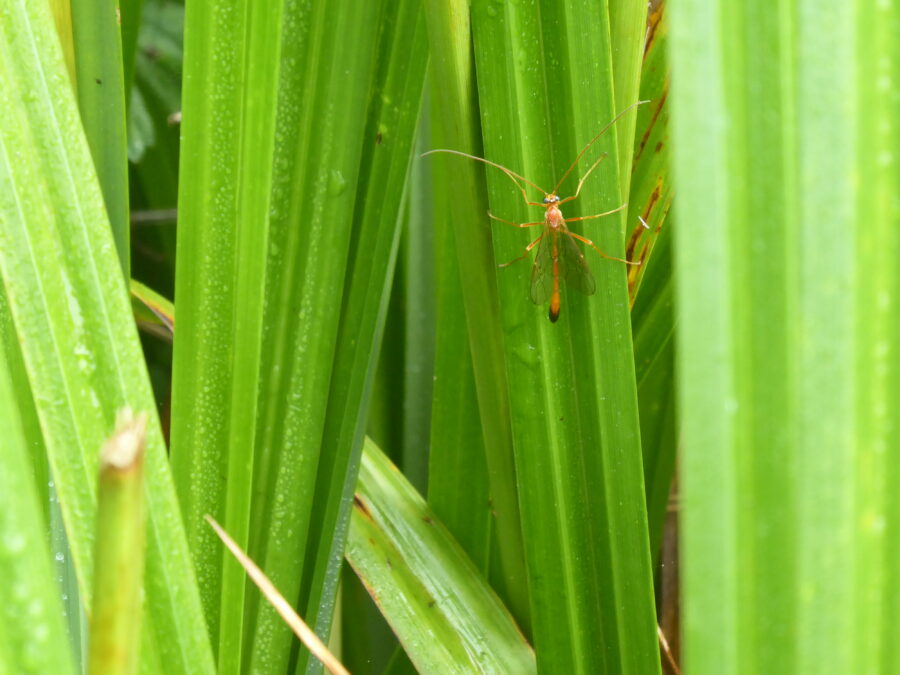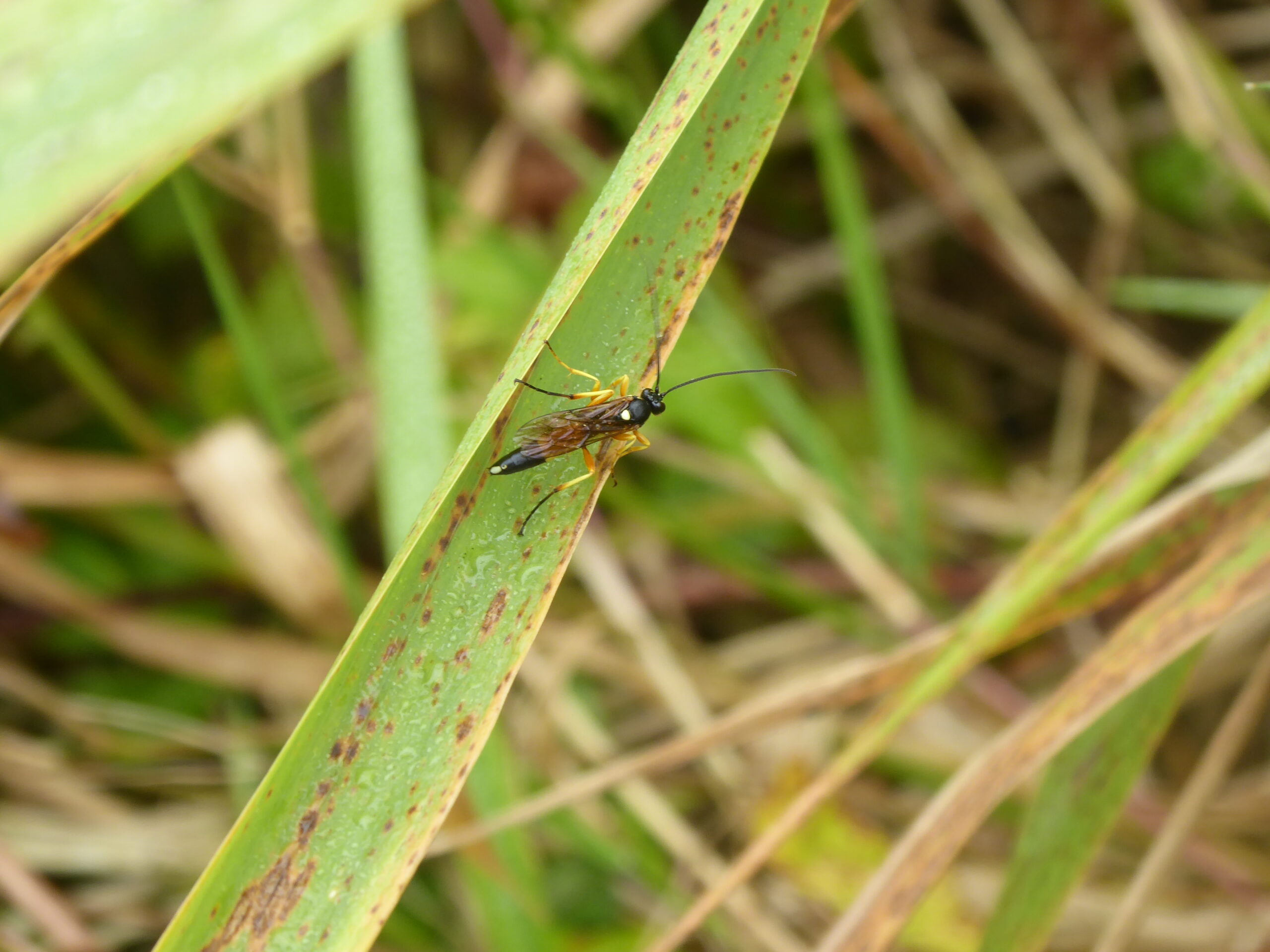The other day when I was wandering around not expecting to see a lot, I saw two kinds of wasp. The usual wasps were busy at work in the willows, but in the cutting just below the bank (that we call ‘Hard Knott Pass’ after one of the hairier passes in the Lake District), I came across this Ichneumon (pronounced Ick Newman) Wasp.
As usual, there are many sub-species of Ichneumonoids, around 2500 in the UK alone. So, I was lucky to find one that was easily identified. The Diphyus quadripunctorius is black and yellow with distinctive white spots on its back and tail. Its name would suggest four spots and I think two might be under the wings. The females are identified by having orange thighs on their back legs and yellow on their antennae. I think this is a male, as although his back thighs look dark, he definitely has all black antennae.
Ichneumon wasps are solitary and nearly all are parasites. The Diphyus lays its eggs in a host, a moth caterpillar, and then the larvae hatch and eat the host, after which they pupate until they are ready to emerge as an adult. They live on the edges of woodlands and in lush grasslands.

The next wasp I saw in the depths of the grasses was a type of sickle wasp Eniscospilus ramidulus. This, too, is a type of ichneumon wasp. It was easy to identify from its orange body and the black tip on its tail. It also has quite distinctive wings. They have a panel with floating pieces of chitin inside. (You can see triangular shapes if you zoom right in). Chitin is the substance that the shell of an insect is made of. I’m not sure why they have such complicated structures in their wings, but I wonder whether it is to make them reflective (?)
They are supposed to be nocturnal, but the males can be found flying during the day as well, which is just as well really, or I wouldn’t have seen it!
